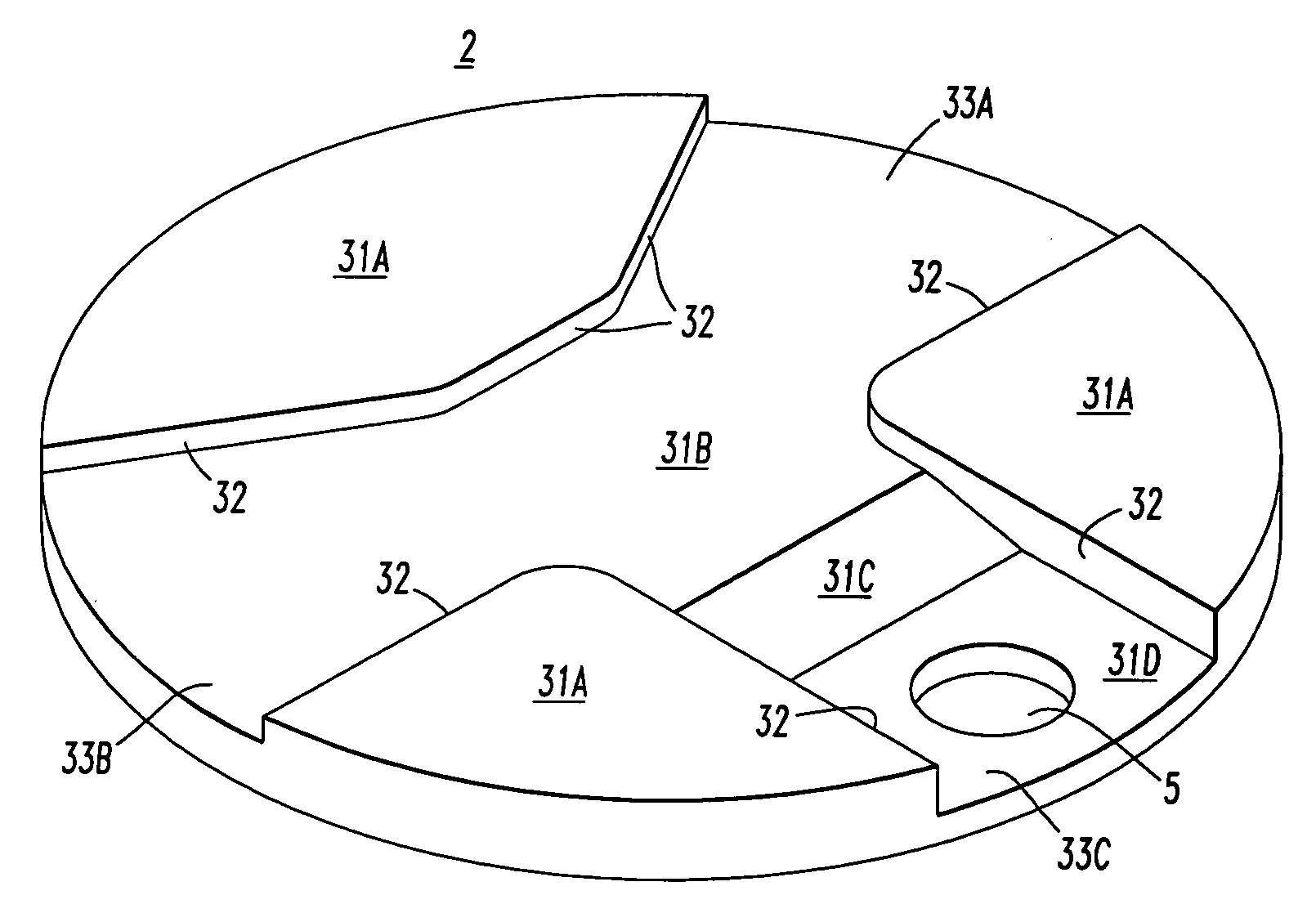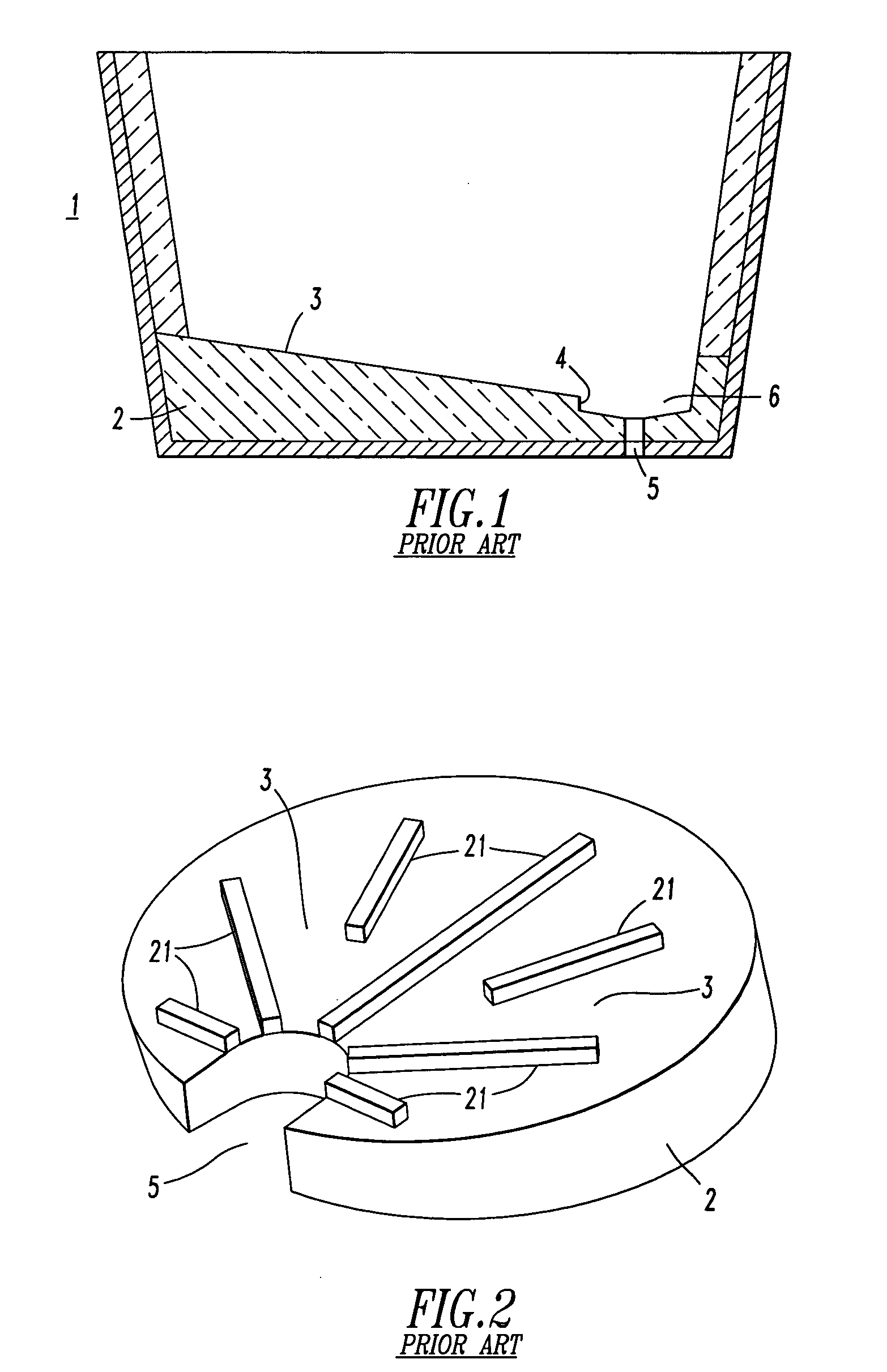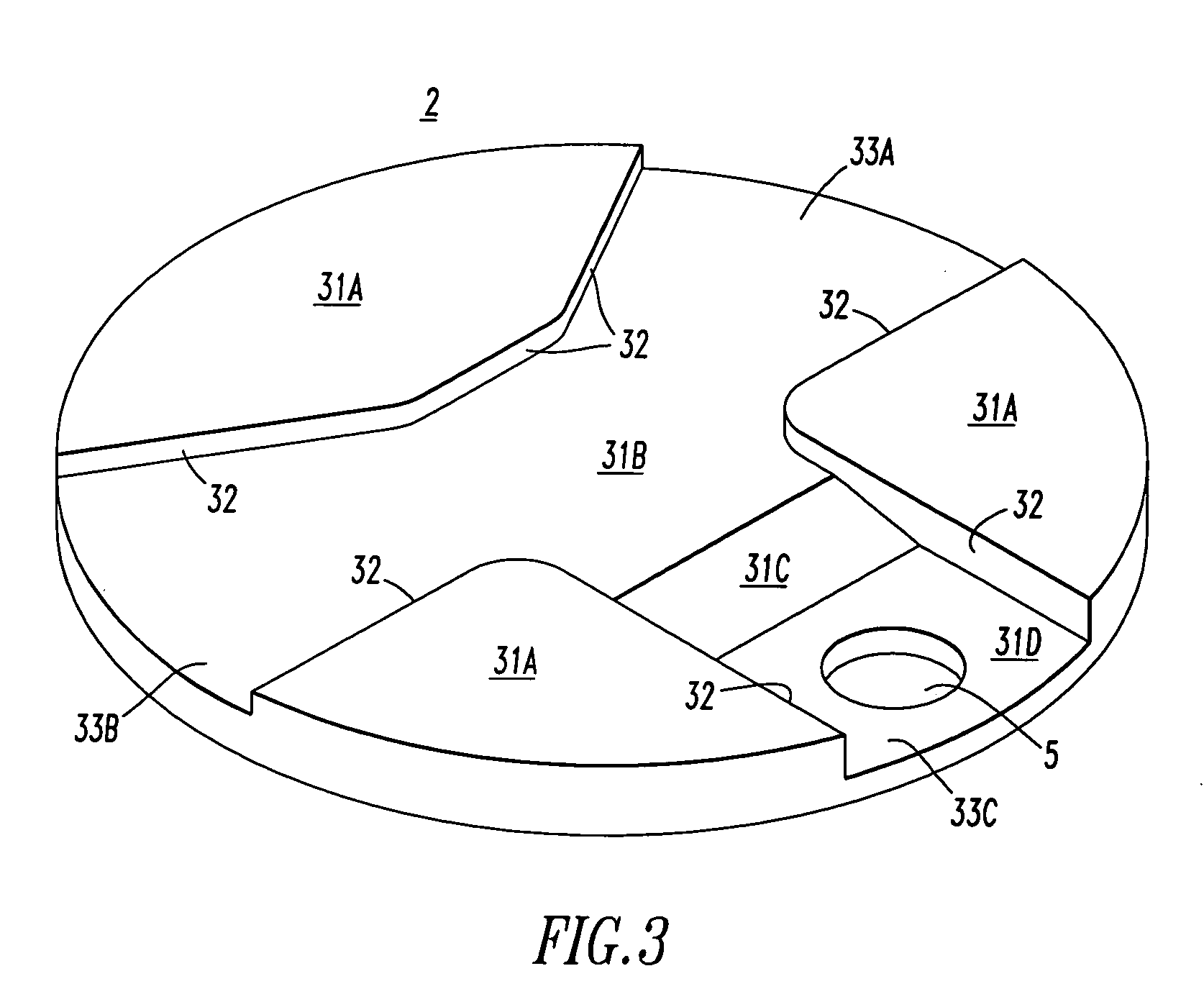Ladle bottom
a technology of ladle bottom and slag, which is applied in the field of refractory articles, can solve the problems of molten metal and slag to mix, difficulty in casting or refining operations, and defects in intermediate or final metal products, so as to reduce the amount of discarded metal, avoid the premature flow of slag, and increase the efficiency of ladle draining operation
- Summary
- Abstract
- Description
- Claims
- Application Information
AI Technical Summary
Benefits of technology
Problems solved by technology
Method used
Image
Examples
Embodiment Construction
[0017]FIG. 1 shows a ladle 1 of the prior art having a bottom 2. The bottom 2 comprises an inclined portion 3 and a vertical portion 4 adapted to direct molten metal in the ladle 1 to an outlet 5. The vertical portion 4 creates a well 6 immediately above the outlet 5. Molten metal is directed to the outlet 5 by the inclined portion 3, and collects in the well 6 before any slag, which may be floating on the molten metal. The well 6 is described as increasing the amount of molten metal that can pass through the outlet 5 before floating slag contaminates the outflow.
[0018]FIG. 2 shows another ladle bottom 2 of the prior art having an inclined surface 3 directed toward the outlet 5. Molten metal, being heavier than slag, is expected to reach the outlet 5 before any floating slag. A plurality of castellations 21 rises from the inclined surface 3. The castellations are described as reducing vortexing, thereby decreasing the likelihood slag will entrain in the molten metal. Less entrained...
PUM
| Property | Measurement | Unit |
|---|---|---|
| Flow rate | aaaaa | aaaaa |
| Height | aaaaa | aaaaa |
Abstract
Description
Claims
Application Information
 Login to View More
Login to View More - R&D
- Intellectual Property
- Life Sciences
- Materials
- Tech Scout
- Unparalleled Data Quality
- Higher Quality Content
- 60% Fewer Hallucinations
Browse by: Latest US Patents, China's latest patents, Technical Efficacy Thesaurus, Application Domain, Technology Topic, Popular Technical Reports.
© 2025 PatSnap. All rights reserved.Legal|Privacy policy|Modern Slavery Act Transparency Statement|Sitemap|About US| Contact US: help@patsnap.com



